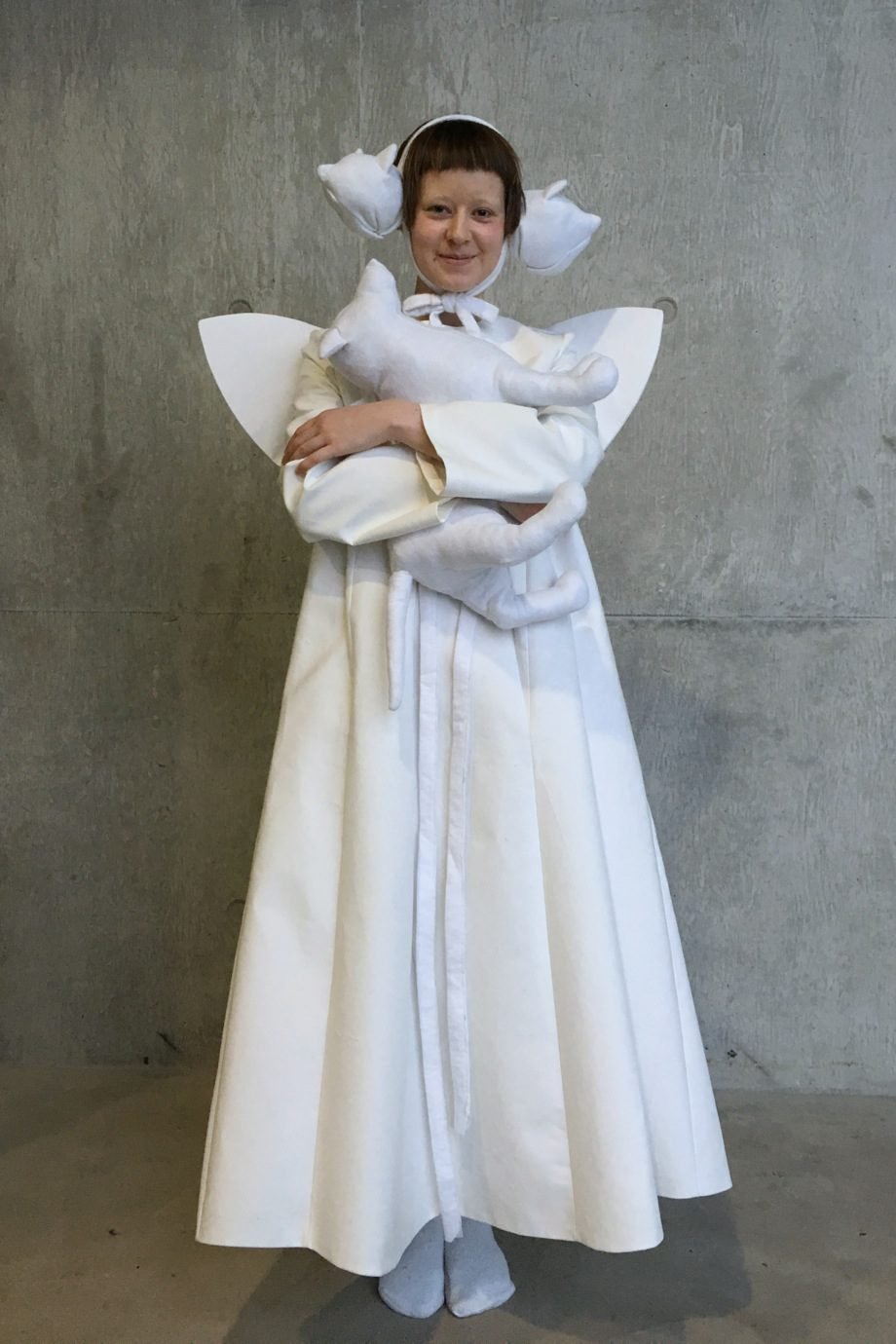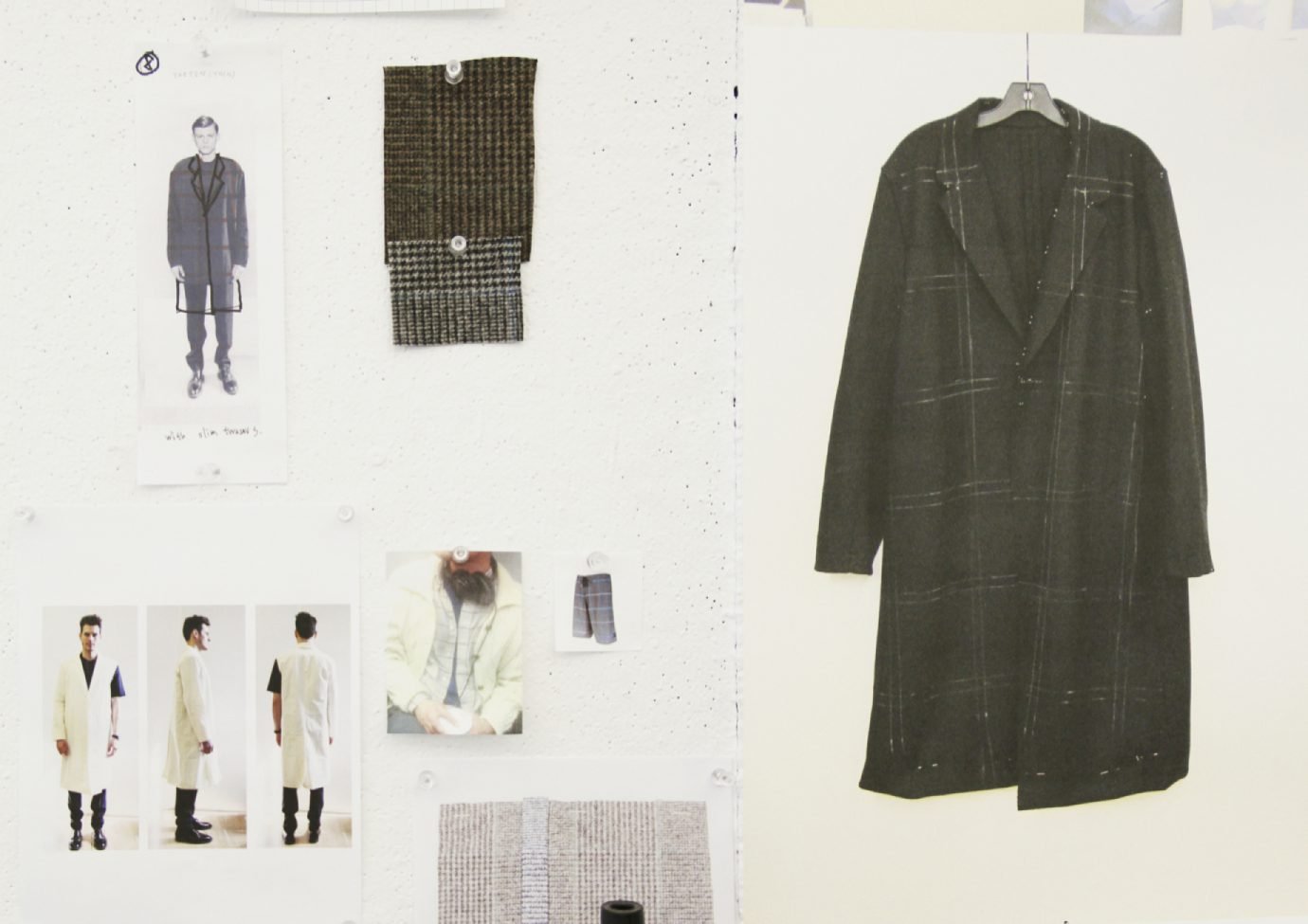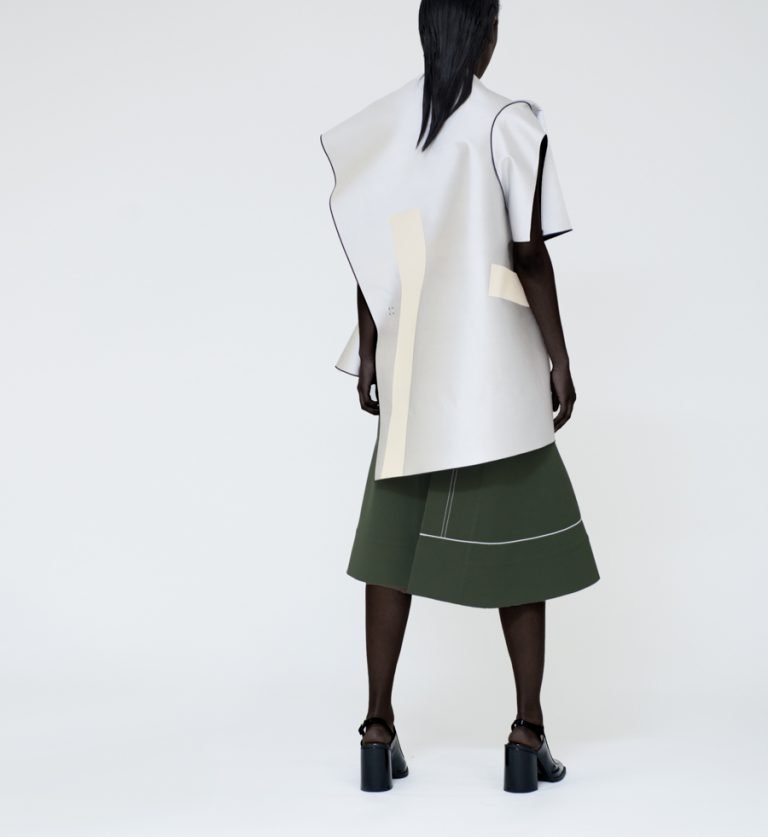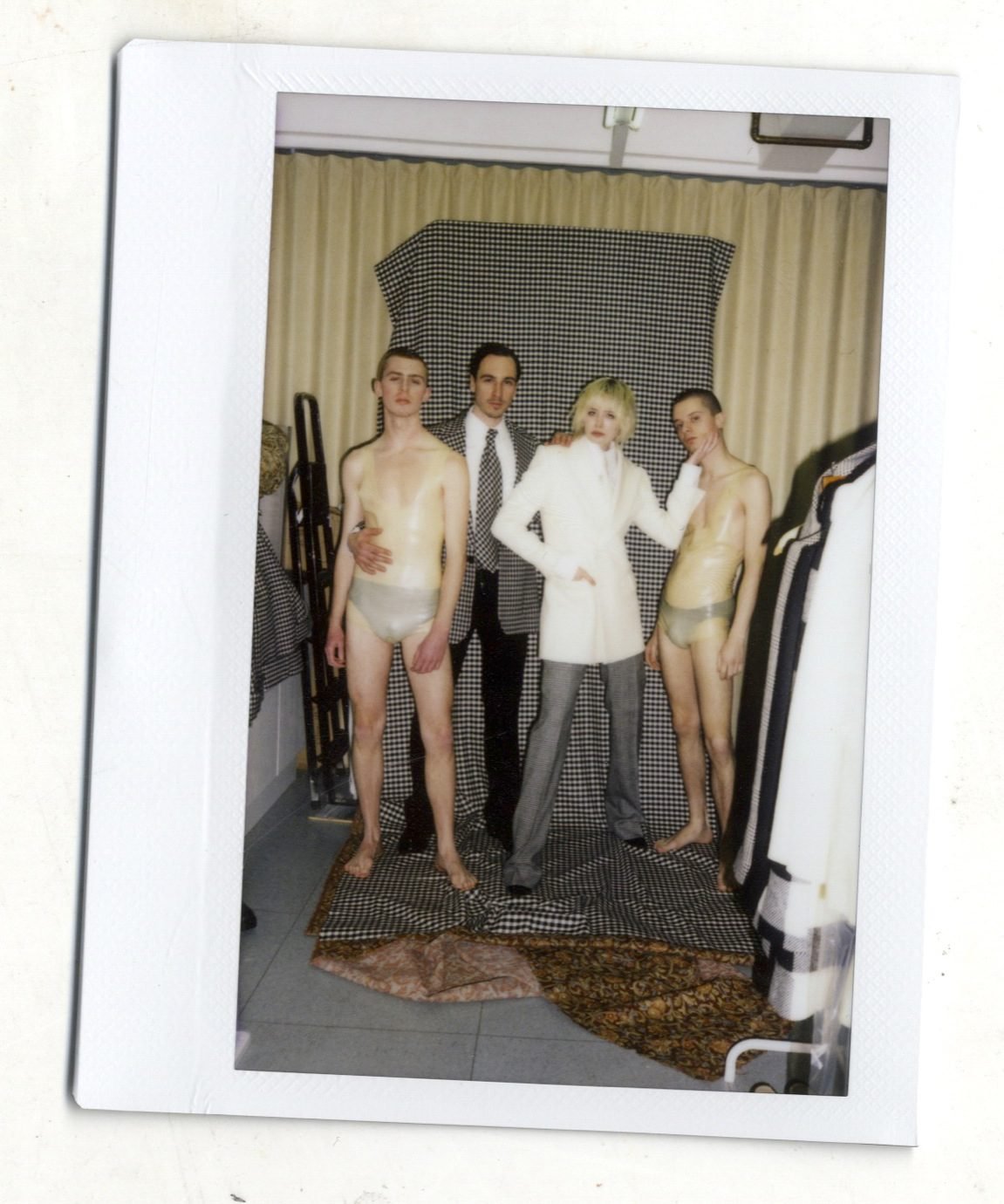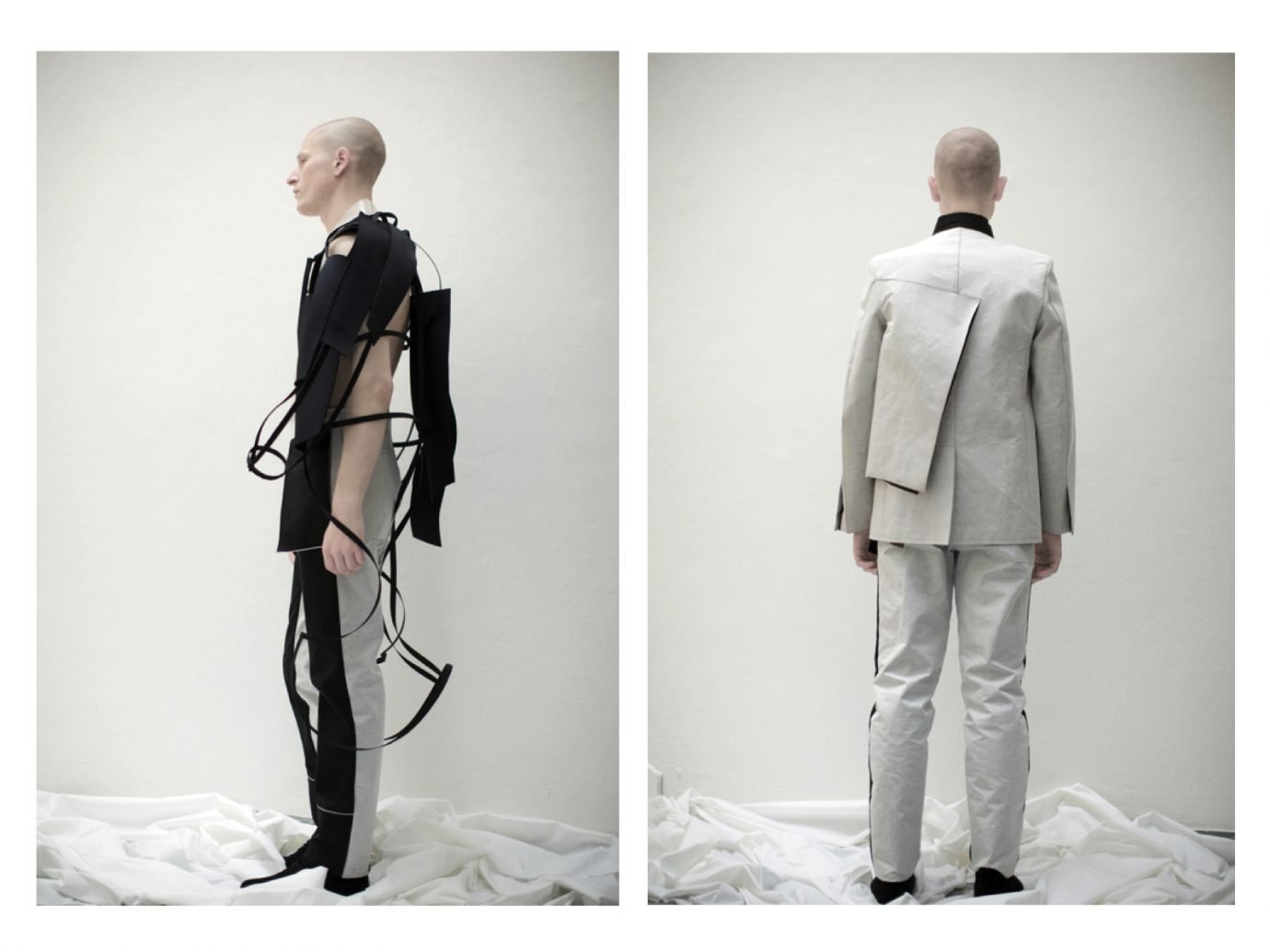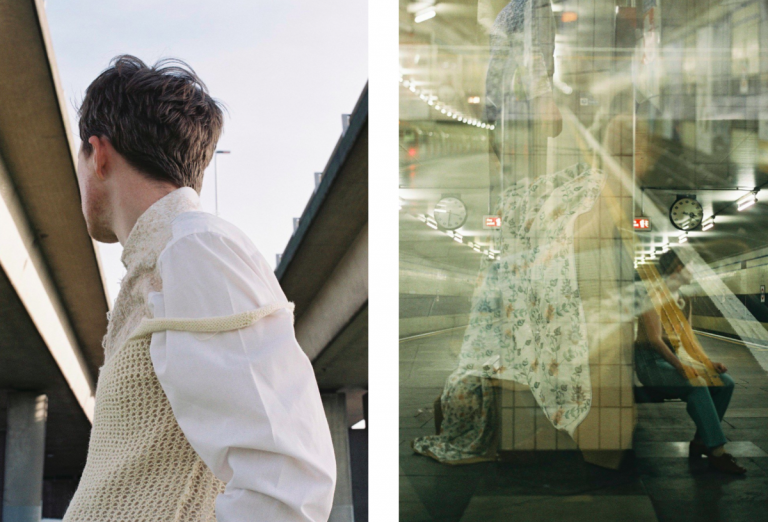“We’re just trying not to be employed against our own character and do things that we don’t like to do.”
Demna Gvasalia — the seemingly public face of the brand — studied at the Royal Academy of Art in Antwerp and worked as senior womenswear designer for the rather non-communicative brand Maison Martin Margiela. Vetements in turn seems to get a lot of comparisons with the press approach of the maison Demna initially worked for, as they prefer to be in the background and let the product speak. Is that comparison rooted in truth? “It wasn’t really something we wanted to do on purpose, by concept. We’re just trying not to be employed against our own character and do things that we don’t like to do. So, there’s no concept behind it at all.”
When asked if he thinks more designers should work with a similar approach and not be too hungry for media attention and have a desire to become a well-recognised face and brand ambassador like, for example, Tom Ford, he responds that it depends on the nature and character of people. “I don’t think there is a rule, there don’t need to be rules. We just try to be very loyal to some things we like doing.”
Studying at Antwerp’s Academy, Demna says, was very much disconnected from the reality of fashion, so he did not have information on how to create a brand. “I definitely knew that I’d have to learn how it works — to learn from either mistakes or other things that you learn while working for other brands. I wanted to do it, but I knew I needed time to gather it all.” All of the friends on the Vetements team were initially working for established houses, but needed ‘some kind of creative expression’, and got together during the evening times to slowly build a core. They wanted to dress their friends in “something that wasn’t necessarily shown in fashion magazines, but just the kind of clothes that wouldn’t be defined on the market. The certain attitude and style was the reason we started to serve that niche on the market. We saw there was a demand for our clothes and then it became a real, commercial project. At the beginning it was really enchanting for us to be creatively happy.”
“When you’re so young it’s quite hard to approach factories. We’ve always been on the end of the list with all the heaviest suppliers, so first come the leaders and then we’re supposed to deliver on time.”
When it in turn became a real project, they soon gained popularity and the LVMH Prize nominations came knocking on the door. With all the exposure they have recently experienced — and the growth that comes with it — their biggest challenge is to physically keep up with the production, even if they now have 13 people on board. “It’s still a very small production structure and every day the challenge is to find out how to get things done in the right way within the timeframe that we have. It’s crazy! [laughs].” Demna believes that ensuring the production cycle is the number one challenge for any young brand. It seems to be the case. When asking other LVMH Prize nominees during the judging days in March what they would spend the Prize’s money on, many noted: ‘growing the team, making sure production is perfect’. “It’s a problem,” Demna says, “because when you’re so young it’s quite hard to approach factories, you know. We’ve always been on the end of the list with all the heaviest suppliers, so first come the leaders and then we’re supposed to deliver on time.”
Is it actually possible for a young brand to have a structured plan when business can easily accelerate in a short period of time? The aim is not to earn as much money as fast as possible, Demna explains, but to establish a stable client base and to keep them happy with what they buy. “But for this, of course, you need to have some kind of strategy.” Reflecting on their own business-progress, Vetements is doing fine at this point, hoping to keep things on a high level without going too fast; avoiding the demand that they will not be able to meet.
Vetements is a brand that can be classified as ‘cool’, but how important is hype for them? “Everything is immediately available on the Internet and then people talk about it. It definitely helps on any level, but it’s not something that we really push for or that we think is necessary for a brand in its development stages. I think staying cool is more like being independent from that, and we’re following our intuition on what’s good.”
And what they’re doing, is pretty much that. They maintain a product-oriented ethos, and think about the person who will actually buy the clothes, not the buyer who will come to the showroom. “Everything’s for sale. Our approach is to make a product that you would want to have and wear. I admire and enormously respect that kind of fashion when you just kind of want to look at it, but with us it’s not really about that.”
“There’s a lot of space today for newbies to come out. Paris is very corporate, it’s all about the big houses. People have interest in something else and different.”
Their research largely consists out of information from the Internet — a lot is directly pulled from social media like Facebook, and Demna says there is lots of sociological research involved — what’s most important for them is the dialogue with their friends who wear the collection, while smoking cigarettes and listening to music. They know their customer by heart, and as a point of advice for all young students, Demna says: “the key is to know that the product that you make is needed by someone. The market is oversaturated, that’s for sure. It’s all about following your heart. Especially in Paris, everything’s so complicated here, but if you’re really believing in something and someone needs that – it works! However, you can never predict the result. There’s a lot of space today for newbies to come out. Paris is very corporate, it’s all about the big houses. People have interest in something else and different.”
But how does the rather stagnant, not-inspirational Parisian fashion education come into play with that? “In general,” he begins, “there need to be more young people and institutions working with young people. It’s great to have all the generations with their expertise and know-how, but it’s quite constraining. The problem in fashion education is that there’s a lack of new.”
Vetements definitely shows that there is space for success in Paris, but how does the collective define that ambiguous term? “I think the measure of success for us is mostly seeing the people buying the clothes in the stores and wearing them. The more people that are seen wearing our clothes on the streets or parties, the more success it brings. That’s not about the number, that’s about… I don’t know how to name it in English, but in French it’s ‘raison d’être’, it’s the reason for something to be out there. For us that really is success.”


